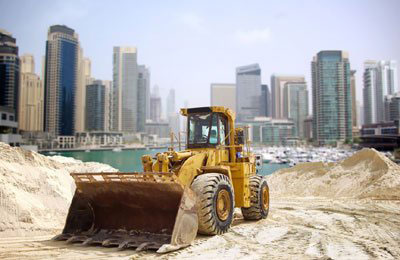
Middle East set for big infrastructure spend
Dubai, July 5, 2014
The Middle East capital projects and infrastructure industry is seeing renewed optimism, with 75 per cent of respondents expecting an increase in spending in the coming 12 months, according to a survey.
This is largely driven by mega events, including Dubai Expo 2020 and Qatar World Cup 2022, as well as increased spending on social infrastructure, including housing, education and healthcare, the PwC survey reveals.
However, this is only half the story. The results show that there is a 'capacity crunch' looming on the horizon - in other words, market capacity is failing to keep pace with demand.
PwC says there are two fundamental areas that will limit the ability to progress with project plans: people and financial resources.
There are already signs that these capacity constraints are beginning to impact project delivery - 95 per cent of respondents say their projects are delayed, with a staggering 45 per cent delayed by more than six months.
However, client decision-making is also a big concern, with 35 per cent of contractors citing it as the greatest challenge they face delivering projects.
"Whilst our survey shows a good dose of optimism, there is a capacity crunch looming, which threatens the delivery of projects," said PwC's leader of capital projects and infrastructure in the Middle East Stephen Anderson.
"It is already having an impact, as we are beginning to see more delays on projects that are underway.
"Broadly speaking, these problems have been apparent in our region's infrastructure sector for several years, but the increase in activity is making them more acute.
"They need to be urgently addressed if the region is to deliver on its ambitions," he added.
The ability to find skilled people - both in terms of quality and volume - was identified as a key challenge for both project owners and contractors.
Difficulties in securing funding are also expected to lead to project delays - the survey suggests that there simply isn't enough funding available.
The sheer scale of commitments is making private sector finance a more attractive, and indeed necessary, option for funding infrastructure projects.
Respondents identified the UAE as their top target for investing in capital projects and infrastructure, closely followed by Qatar and Saudi Arabia.
Strong economic growth and budget surpluses in these countries provide the backbone for ambitious spending plans, as their governments continue to invest in economic diversification while at the same time spending to maintain or expand hydrocarbon and downstream petrochemical production.
However, optimism in the rest of the region is not so high, as political instability continues to affect confidence.
The proportion of respondents to the survey saying they would be targeting projects in Egypt fell substantially compared to the last survey, and it remains to be seen if the president, along with announcements to expand infrastructure programmes, can restore confidence.
There has been a significant reduction in the number of projects being scaled back or cancelled due to funding constraints.
Down 14 per cent from the last survey, this is explained by the increasing role of private finance, as 83 per cent stressed the importance of the private sector in financing projects.
However, even though the banking sector and capital markets are in a bullish mood, there are growing concerns that rising demand will soon exceed the supply of capital, with 45 per cent of respondents noting that funding constraints had resulted in projects being postponed or deferred last year.
The 2014 Capital Projects and Infrastructure survey was completed by 130 of the region's most prominent project owners, developers, contractors, advisors, and financiers.-TradeArabia News Service







